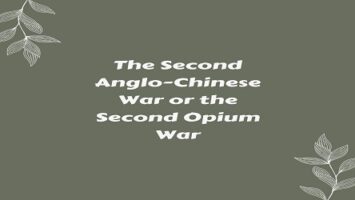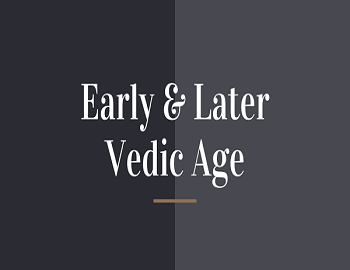Table of Contents
Harshavardhana: Important Facts
- Pushyabhutis were the feudatories of the Guptas.
- They called themselves Vardhanas.
- The Pushyabhutis family came to the fore after the Huna invasion.
- The first important king of the Pushyabhuti dynasty was Prabhakaravardhana. His capital was Thaneswar.
- He assumed the title of Paramabhattaraka and Maharajadhiraja.
- He had two sons, Rajyavardhana and Harshavardhana and a daughter Rajyasri, married to the Maukhari King Grahavarman.
- After the death of Prabhakaravardhana, Sasanka with the help of the Malwa king, Devagupta invaded Kanauj. King Grahavarman was killed and queen Rajyasri was thrown into prison. Hearing this news, Rajyavardhana immediately started with his troops to suppress the kings of Gauda and Malwa. But he was treacherously killed by Sasanka.
- In the meantime, Rajyasri escaped into forests.
- Harsha ascended the throne of Thaneswar around A.D. 606 on the advice of the statesman Bhandi. He took the title rajaputra instead of the maharaja and took another name Shiladitya.
- After his accession, Harshavardhana immediately had to march against Sasanka. He entered into an alliance with Bhaskarvarman, the king of Pragjyaotisha (Assam), and defeated Sasanka and rescued his sister from the forests of Vindhayas when she was about to immolate herself.
- The kingdoms of Thaneswar and Kanauj were combined and Harsha made Kanauj his new capital.
- Harsha was now free for his second task of achieving his Digvijaya, for which he collected a large force comprising 5000 elephants, 2000 cavalry, and 50,000 infantry.
- Bana tells us that Harsha put Bhandi in charge of the campaign and “pounded a king of Sindh.”
- In the west, his conquests included the kingdom of Valabhi.
- The most important military campaign of Harshavardhana was against the Western Chalukya ruler Pulakesin II. Harsha with an ambition to extend his kingdom south of the Narmada river marched against the Chalukya ruler. But the Aihole inscription of Pulakesin II mentions the defeat of Harsha by Pulakesin, who after this achievement assumed the title Paramesvara. Hiuen Tsang’s accounts also confirm the victory of Pulakesin.
- The Banskhera inscription contains the signature of Harsha.
- The Banskhera, Nalanda, and Sonepat inscriptions of Harsha describe him as a worshipper of Siva. However, later in his life, he became a Hinayana Buddhist. Hiuen Tsang converted him to Mahayana Buddhism.
- Hiuen Tsang informs us that Harsha convened two assemblies one at Kanauj and another at Prayaga.
- The assembly at Kanauj was held in honour of Hiuen Tsang. Here the doctrines of Mahayana were propagated with utmost precision.
- This assembly was attended by twenty kings, four thousand Buddhist monks, and about three thousand Jains and Brahmans. The assembly continued for 18 days under Hiuen Tsang as its President.
- According to Hiuen Tsang, at the assembly at Prayaga (Allahabad), Harsha donated most of his possessions including his clothes and jewellery. This assembly held at the end of every five years, at the confluence of the Ganga, the Yamuna, and the Saraswati.
- Harshavardhana went to Kashmir to offer worship to a tooth-relic of the Buddha which he found concealed underground and then had it unearthed, and carried off by force, to enshrine it in a Vihara in Kannauj.
- Harsha established diplomatic relations with China, the country that showed a keen interest in Buddhism. Ma-twan-lin’s Hsin Tang Shu gives detailed information on the exchange of missions between Harsha and the Chinese Emperor Tai Tsung.
- Harshavardhana wrote three Sanskrit plays- Nagananda, Ratnavali, and Priyadarshika.
- Harshacharita (life of Harsha), a biography written by his court poet Banabhatta. He was also the author of Kadambari.
- Other literary figures in Harsha’s court were Matanga Divakara, Mayura (the author of Suryashataka), and the famous Barthrihari, who was the poet, philosopher, and grammarian.
- Si-Yu-Ki, the travel account of the Chinese Buddhist pilgrim Hiuen Tsang, who visited India during 629–644 A.D.
Harshavardhana- Administrative Divisions:
The administrative divisions are thus mentioned in Harsha’s inscriptions in the descending order-
- Bhukti– province.
- Vishaya– district.
- Pathaka– sub-division of vishaya.
- Grama– village.
One sixth of the produce was collected as land tax.
Chief Officers of the State under Harshavardhana:
- Bhandi.
- Avanti (supreme minister of war and peace).
- Simhanada (Harsha’s Senapati).
- Kuntala (the commander of the cavalry).
- Ishvaragupta (Keeper of records).
- Bhana or Bhanu.







![Montagu Declaration or August Declaration [1917] 8 August Declaration-1917](https://gkscientist.com/wp-content/uploads/2020/10/August-Declaration-1917.jpg)

Comments (No)